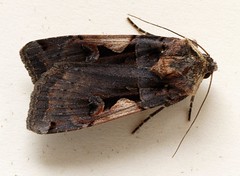Moth Larvae Research Project: Black C
Research on moth larvae hibernating in the spring meadows of the recreation area “Lainzer Tiergarten” and their contribution to biodiversity and population dynamics
The year 2010 has been declared the International Year of Biodiversity by the United Nations. In accordance with the Convention on Biodiversity (CBD), the term biological diversity includes the diversity of life on earth, genetic diversity, and diversity of ecosystems. This project concentrates on the diversity of moth larvae.
The aim of the project „Black C“ is to conduct collaborative research on moth larvae in the Lainzer Tiergarten together with the Rudolf-Steiner Elementary School in Mauer. In spring 2010 and 2011, under the supervision of researchers of the Federal Research and Training Centre for Forests, Natural Hazards and Landscape (BFW), pupils of two school classes will collect samples from a plot at a three-week interval. The purpose of the surveys will be to lay out sample plots, to identify the level of larval infestation of the plots, to identify moth larvae, and check at least 10-15 % of the individuals for parasites such as Hymenoptera and Tachinidae.
Knowledge about population dynamics can be of crucial importance in order to prevent mass break-out. For this purpose prognoses are made and interpreted by means of various prognosis models using data collected together with the pupils.
Aim of the project is to identify the diversity of the macro-moth larvae species that are hibernating in the meadows of the Lainzer Tiergarten. On the one hand, moth larvae are virgin territory in scientific research, on the other hand, they play an important role in forest/meadow ecosystems. They are well suited for providing pupils insights into nature’s complex relationships. The project was given the short title „Black C“, because the moth with the Latin name Xestia c-nigrum is a typical representative of this type of moth species.
This project is already completed.

